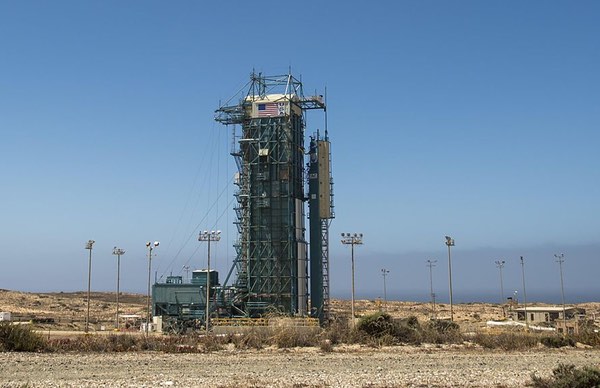Bringing Asgard to Earth: Making a Thor Heritage District at Vandenbergby Joseph T. Page II
|
| Aside from the National Historic Landmark status of SLC-10, the other sites hold no historic value in the eyes of the US Air Force. That is to say, there are no current plans to preserve any of these sites. |
While this end of an era fact warrants acknowledgement in space history circles, the launch sites at Vandenberg hold their own special piece of the puzzle. SLC-2, and the surrounding sites of SLC-1 and SLC-10, all launched missile or space booster variants of Thor. As historical sites go, there would be no better place to call the “Home of Thor” (with apologies to the denizens of Asgard.)
Places that hold significant historical, architectural, archeological, engineering, or cultural value should be protected. Aside from the National Historic Landmark status of SLC-10, the other sites hold no historic value in the eyes of the US Air Force. That is to say, there are no current plans to preserve any of these sites. Both pads of SLC-1 are disrepair, and only skeletal remains of the environment shelter still stand on the East pad. The launch pad at SLC-2E was decommissioned in 1972 and stripped of equipment and other salvageable materials. Only SLC-2W and SLC-10 survive.
Why now?
In 1984, the National Park Service (NPS) performed a nationwide survey of military installations that played important roles in aerospace history, to be included in their “Man in Space” National Historic Landmark theme study. Initially, NPS selected SLC-2, the site of the first Thor launches, for that designation. However, additional research showed that SLC-2 had been radically altered from its original missile launch pad configuration to support Thor SLV and later Delta and Delta II launches. The pad “next door,” SLC-10 was put forward as an alternative site, as it supported missile combat training launches until 1962 and booster launches until 1980. In 1986, the NPS designated the complex as “the best surviving example of a launch complex built in the 1950s at the beginning of the American effort to explore space.”
One niche area of space history—Thor IRBM, Program 437 ASATs, and DMSP satellites—has already been preserved at SLC-10. The shuttering of Delta operations in the next few years at SLC-2 allows another to be incorporated into the fabric. The National Register of Historic Places recognizes and includes significant properties, classified as buildings, sites, districts, structures, or objects. In cases such as this, the Register also recognizes districts, defined as sites that “possess a significant concentration, linkage, or continuity of sites, buildings, structures, or objects united historically or aesthetically by plan or physical development.” Additionally, a district “…derives its importance from being a unified entity, even though it is often composed of a wide variety of resources. The identity of a district results from the interrelationship of its resources, which can convey a visual sense of the overall historic environment or be an arrangement of historically or functionally related properties.” A Thor Historic District at Vandenberg would conceivably preserve the sites and equipment from the earliest Thor missions to the present day Delta II.
It could also provide a possible “home” for NRO artifacts.
The NRO connection
It’s no secret, twenty years since CORONA’s declassification, that Vandenberg launched the first photoreconnaissance satellites in the early years of the Cold War. Space history aficionados will also state that follow-on photo reconnaissance systems – ARGON, LANYARD, GAMBIT, QUILL and HEXAGON – were also launched from the West Coast, due to its unique geography for launching into polar orbits. Two footnotes in human spaceflight history – the Manned Orbiting Laboratory and the “Blue” Space Shuttle – were planned to launch from Vandenberg at the infamous SLC-6, but were cancelled for various budgetary and safety reasons. Bottom line – Vandenberg is the NRO’s West Coast home. The Thor pads around Purisima Point did much of the heavy lifting of NRO payloads into the 1980s.
| A Thor Historic District at Vandenberg would conceivably preserve the sites and equipment from the earliest Thor missions to the present day Delta II. |
Earthbound declassified NRO artifacts are few and far between to view on public display. GAMBIT and HEXAGON test articles reside at the National Museum of the US Air Force in Dayton, Ohio. A KH-4B CORONA camera resides at the National Air and Space Museum in Washington, DC. If the NRO has additional hardware or informative displays, they are likely kept in secure environments for distinguished visitors to view.
Pieces and parts
An envisioned Thor Historic District would encompass the launch pads at SLC-1, SLC-2, and SLC-10 and remaining hardware and/or historic displays regarding:
- Royal Air Force participation in the Thor IRBM program
- NRO utilization of Thor, with artifacts from CORONA
- Coverage of the Defense Meteorological Support Program (DMSP)
- Information on Program 437, the anti-satellite program
- The Delta family of booster for NASA, NRO and commercial launches
Facilities at the Vandenberg Space and Missile Technology Center (formerly the Space and Missile Heritage Center) already hold some pieces of the above systems, along with artifacts from Atlas, Minuteman, and Peacekeeper ICBMs. Recognition of Thor’s unique place in space history would widen the Center’s influence and reach a larger segment of the interested population, space history fans, NRO personnel, and distinguished dignitaries.
With the recent failure of the California Space Center Consortium to convince the Lompoc City Council to support a space technology museum and entertainment site near Vandenberg, another viable alternative is for the Department of Interior to partner with the US Air Force and save the Thor and Delta family story. The infrastructure is there, but if left unchecked, it will go the way of its predecessors at SLC-1.
